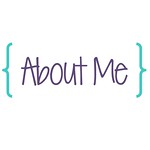My first problem was how to get the notebooks. Since I am a Title 1 intervention teacher, I do not send out a supply list. Fortunately, I have a very good friend over at Mead. He was generous enough to get me plenty of free composition notebooks for all my students. They even came in fun designs. It was a dream come true!
Once I received the notebooks, I put a label on the front for each student's name. Then, I used small post-its to label four sections: Charts, Strategies, Skills, and Writing.
On the first page of each section, we kept a running list of what could be found in that particular section. I found that keeping this running list forced students to stay organized and helped improve students' understanding of terms. For example, students were more likely to remember what the literary term "theme" meant because we had written it several times in our reader's notebooks. Repetition is key!
If you have ever read my blog before, you know that I love anchor charts. For this reason, the first section in our reader's notebooks was for charts. With each anchor chart I made, I took a picture and made copies for my students to glue into their notebooks. Sometimes the charts required my students to fill out information during the lesson, but other times they did not. I found this section to be extremely beneficial to my students. Instead of always asking me questions, my students began looking up the information themselves using their notebooks. They really took ownership of the material.
The second section in the reader's notebooks focused on reading strategies. I explained strategies to my students as things they should be doing in their heads whenever they are reading. These include making predictions, making connections, synthesizing, determining importance, etc. Many of my struggling readers do not use these strategies in their reading. As a result, I focus on teaching these strategies explicitly.
The third section of the notebooks is used to work on various reading skills. These skills can include character traits, cause and effect, compare and contrast, main idea/supporting details, etc. I explain skills to students as various ways students will need to analyze texts. They will not have to use these skills with every text, but should know how to use them.
Within the final section, students worked on written response in their reader's notebooks. I really wanted to reduce the amount of written questions I worked on with students - quality over quantity. For most articles and books, I would come up with 1-2 questions. Students would record the questions in their notebooks. Sometimes we would answer the questions together, and sometimes students would answer the questions independently. With these questions, we really worked on the wording of our responses and using evidence to support our answers. I believe I saw a great improvement in the quality of my students' written response as a result of this section of the notebooks.
I fully intend on using reader's notebooks again next year. Students responded very positively to the notebooks. They loved the fun designs, and definitely preferred them over any type of worksheets. The notebooks just seem much more open-ended. My students are all very excited to take the notebooks home over the summer.
Do any of you use reader's notebooks? If so, how do you structure your notebooks?










I didn't do Reader's Notebooks this year, because I just didn't understand how to set them up. Now that I've done GR for a whole year I know what I want to accomplish with each book, so I know what types of sections I want. Thanks for laying it out for me!
ReplyDelete-Maria
Amy, thanks for the tour of your Reader's Notebooks. It has definitely given me some ideas for next year.
ReplyDelete~Courtney
HokIe Teach
I love all your posts! I think we would be an awesome teaching pair because I see many similarities in my teaching and your teaching. I just never see to have enough time to post mine...lol!
ReplyDeleteThat seems like an awesome lesson! Didn't any of the kids realize it would be so much easier to calculate totals of things? Anyway--their responses seemed good--way to make those students really think!
ReplyDeleteKids Math Teacher